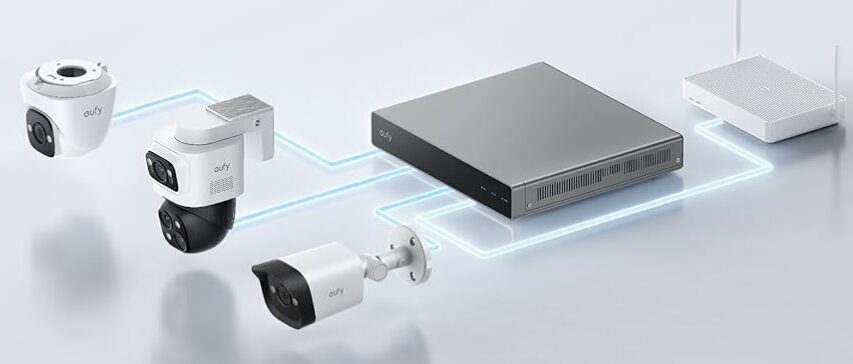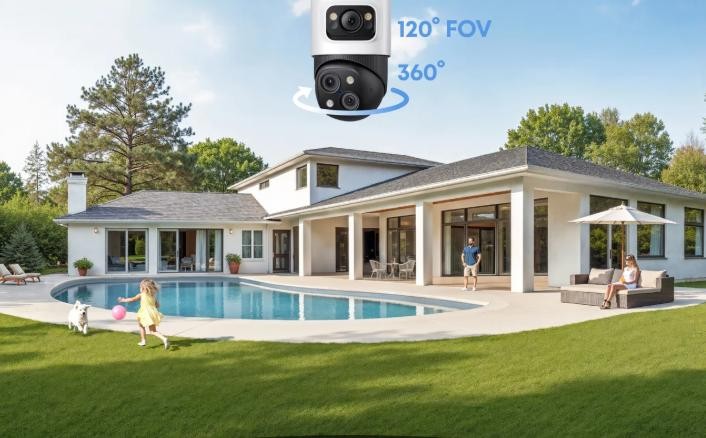Power over Ethernet (PoE) security cameras have become a popular choice for homeowners seeking a reliable, low-hassle surveillance solution. By delivering both power and data through a single Ethernet cable, these cameras eliminate the need for separate power cords, simplifying installation and reducing clutter. Whether you’re monitoring your front door, backyard, or driveway, a well-chosen PoE camera can provide round-the-clock protection with clear footage and smart features. However, with countless models on the market, selecting the right one requires careful consideration of your home’s layout, security needs, and technical requirements. This article guides you through the key factors to ensure you pick a poe security camera that fits seamlessly into your home and keeps your loved ones safe.
Core Technical Specifications to Evaluate
Resolution and Image Quality
The primary purpose of a security camera is to capture clear, actionable footage, making resolution a top priority. PoE cameras typically offer resolutions ranging from 1080p (Full HD) to 4K Ultra HD, with some models even supporting 5MP for a balance of detail and storage efficiency. For most homes, 1080p is sufficient for monitoring entry points like doors and garages, as it captures enough detail to identify faces or small objects at close range. However, if you need to monitor larger areas—such as a spacious backyard or a long driveway—4K resolution is worth the investment. It provides four times the detail of 1080p, allowing you to zoom in on distant activity without losing clarity, which is crucial for identifying intruders or license plates.
Beyond resolution, consider low-light performance. Look for cameras with infrared (IR) night vision, which uses built-in LEDs to illuminate dark areas. A good PoE camera should offer night vision up to 100 feet or more, ensuring clear footage even in complete darkness. Some advanced models feature “starlight” sensors, which capture color footage in very low light by amplifying ambient light, making it easier to distinguish clothing colors or vehicle details after sunset.
Power Requirements and Compatibility
PoE technology relies on Ethernet cables to deliver power, but not all PoE cameras and network devices are compatible. It’s essential to check the PoE standard supported by both the camera and your network switch or injector. The most common standards are PoE (802.3af), which provides up to 15.4 watts, and PoE+ (802.3at), which delivers up to 25.5 watts. Some high-end cameras with features like pan-tilt-zoom (PTZ) or built-in heaters may require PoE++ (802.3bt), which supplies up to 90 watts.
If your existing network switch isn’t PoE-enabled, you’ll need a PoE injector—a small device that adds power to an Ethernet cable. Ensure the injector matches the camera’s power requirements to avoid damage or insufficient performance. Additionally, check the cable type: Cat5e or Cat6 cables are recommended for PoE setups, as they support both data transfer and power delivery over longer distances (up to 328 feet for most standards). Using lower-grade cables can lead to signal loss or power issues, especially in larger homes.
Practical Features for Home Surveillance
Weather Resistance and Placement Flexibility
Where you install your PoE camera dictates its required durability. Outdoor cameras must withstand rain, snow, extreme temperatures, and humidity, so check the IP (Ingress Protection) rating. An IP65 or higher rating is ideal for outdoor use, as it means the camera is dust-tight and can resist high-pressure water jets—perfect for rainy or snowy climates. For indoor use, a lower rating like IP20 is sufficient, but look for models with sturdy construction to handle accidental bumps or spills.
Placement flexibility is another key factor. Fixed cameras are great for targeting specific areas like doorways, while PTZ (pan-tilt-zoom) cameras offer 360-degree coverage, allowing you to adjust the view remotely. Some cameras also feature wide-angle lenses (110 degrees or more) to cover large spaces with a single device, reducing the need for multiple cameras. Consider your home’s layout: a wide-angle camera by the garage might eliminate the need for a second camera pointed at the driveway.
Smart Features and Integration
Modern PoE cameras come with smart features that enhance home security and convenience. Motion detection is a must, but look for models with customizable motion zones—this lets you ignore activity in non-critical areas (like a busy street or a tree swaying in the wind) to avoid false alerts. Some cameras use AI to distinguish between humans, pets, and vehicles, reducing unnecessary notifications further.
Homeowners looking for a dependable poe camera can explore Amcrest’s range of PoE cameras, known for combining intelligent motion detection with high-definition clarity and seamless smart home integration.
Two-way audio is another valuable feature, allowing you to speak through the camera to greet visitors or deter intruders. Integration with smart home systems (like Amazon Alexa, Google Home, or Apple HomeKit) lets you control the camera via voice commands or view footage on smart displays. Cloud storage options enable remote access to footage from your phone, but many homeowners prefer local storage via an NVR (Network Video Recorder) for greater control over their data. Ensure the camera supports your preferred storage method, whether it’s cloud, NVR, or a built-in SD card.
Conclusion
Choosing the right PoE security camera for your home requires balancing both technical and practical features. On the technical side, resolution, night vision quality, and power compatibility are crucial for clear, uninterrupted footage. Practically, you’ll want to consider durability, weather resistance, motion detection, and smart alerts that integrate with your devices. Assessing your home’s layout, blind spots, and network setup helps narrow down options and ensures a smooth installation. A carefully selected PoE camera not only safeguards your property but also provides reliable monitoring and peace of mind, knowing you can check in on your home anytime, anywhere.




































